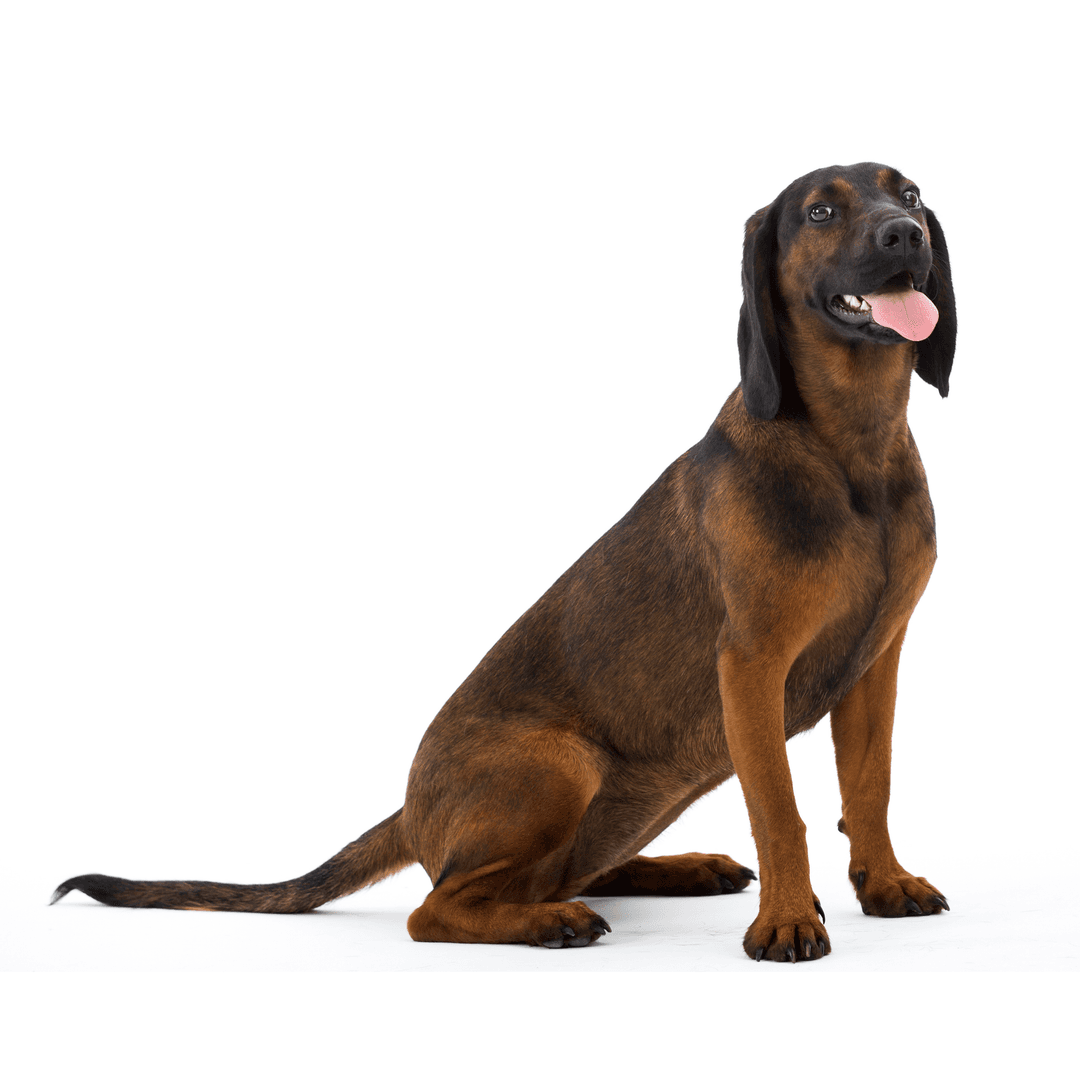Discover your dog's connection to this breed and 200+ others


Discover your dog's connection to this breed and 200+ others



The Alpine Dachsbracke is a small breed of dog of the scent hound type originating in Austria. These dogs were bred to track wounded deer and other game, with their history going back to the 19th century. Alpine Dachsbrackes are known for their robust build, making them excellent working dogs in steep, rocky terrain.
Alpine Dachsbracke can suffer from neuronal ceroid lipofuscinosis 8 (NCL 8). They may be prone to back issues that can affect Dachshunds, and may also suffer from spinocerebellar ataxia. Genetic testing is recommended, including for the following specific conditions: progressive rod-cone degeneration, chondrodystrophy (CDDY and IVDD), chondrodysplasia (CDPA), hyperuricosuria, and degenerative myelopathy.
The Alpine Dachsbracke is known to be courageous, friendly, and intelligent. This breed is also typically loyal and dedicated to its family. Being a scent hound, these dogs are known for their keen sense of smell and determination when on a trail. They have a strong prey drive and would do best with families that do not have other small animals.
The Alpine Dachsbracke tends to be good with children and gets along well with other dogs, although early socialization is always beneficial. These dogs are active and need regular exercise to keep them healthy and prevent boredom. They can also be stubborn at times, requiring consistent training methods. While they can adapt to living in an apartment, they would do best with access to a yard where they can follow their noses and explore.
A canine genetic lineage is a group of individuals or entire breeds that descended from common ancestors predating modern breed formation. Often these lineages are associated with a ‘type’ of dog with a unique historical working role and associated behaviors (e.g., herding, scent hunting, etc.).
Scent Hounds were historically used as hunting dogs. They were bred for their exceptional sense of smell, which is also a defining factor of this lineage of dogs. Scent hounds also have a distinctive bark which sounds more like a howl, this was developed to communicate with their hunters. Many breeds within this lineage were bred to work in groups, and have a strong pack mentality. Scent Hounds tend to have a stronger drive to follow their nose instinctually than their human counterpart. Scent hounds are also known for their endurance and stamina, these traits allow them to follow scents over long distances and for long periods of time.
Example breeds with ancestry from this lineage include Basset Hound, English Foxhound, and Dachshund.
The Alpine Dachsbracke was recognized by the United Kennel Club on January 1, 1996.
https://www.royalcanin.com/us/dogs/breeds/breed-library/alpine-dachsbracke
https://petkeen.com/alpine-dachsbracke/
https://vgl.ucdavis.edu/breed/alpine-dachsbracke
https://www.mdpi.com/2073-4425/10/5/362
https://onlinelibrary.wiley.com/doi/pdf/10.1002/9781119540687#page=856
Recommended by top vets with decades of experience
21 breeds
64 genetic health markers
50 genetic trait markers
